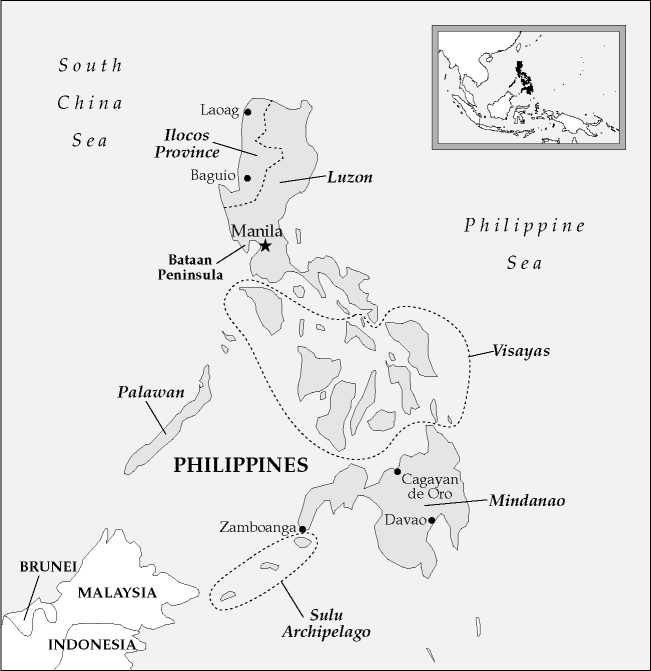March 16,1521, is often cited as the beginning of the Spanish period in the Philippines. On that day Ferdinand Magellan, who was sailing around the world, first sighted the Philippines. Magellan claimed the territory for Spain. Forty years later, in 1565, Spain sent its first permanent settlement to the islands, which the Spanish named the Philippines in honor of their king, Philip II.
The first Spanish governor, Miguel de Legazpi, established his capital at Manila because of its convenient harbor and its access to rice grown in Luzon. The Spanish wanted their colony in order to trade with China and with the spice-rich islands of what is now Indonesia. Although they were not successful in these efforts, they did manage to spread their Roman Catholic religion in all

Parts of the islands, except among the mountain tribes of northern Luzon and among the Muslims in the far south. The Spanish had been engaged in warfare against Muslims in Spain for centuries, and they taught their views of Muslims along with the Roman Catholic religion. Many of the tensions between Christian and Muslim Filipinos may be traced back to the Spanish tradition of seeing Muslims as enemies.
Although the Spanish ruled the Philippines, there were comparatively few Spanish colonists, and Spanish never became the common language of the islands. Instead, each separate region maintained its own language. Members of religious orders from Spain, the Dominicans, the Franciscans, and the Augustinians, largely controlled the politics and the economy of the islands.
By the mid-nineteenth century educated Filipinos had begun to grow impatient with being ruled from Spain and especially impatient with the rule of the religious orders. Many of these educated Filipinos began to call for removal of the religious orders and for representation in the Spanish parliament. Jose Rizal, a half-Chinese doctor, scholar, and writer, was one of the best known of the Filipinos seeking greater freedom for the country.
When the Spanish executed Rizal on charges of treason in 1896, this contributed to the cause of more radical Filipinos who were demanding complete independence for the islands. The most successful rebels were under the command of the young Emilio Aguinaldo, who became leader of the independence movement.
In 1898 war broke out between Spain and the United States, which was trying to drive Spain out of Cuba. Aguinaldo's forces allied themselves with the United States and provided information to the American navy, which attacked Manila Bay. After Spain surrendered, the Spanish agreed to grant Cuba independence and to cede the Philippines, Guam, and Puerto Rico to the United States for US$20 million.
In the meantime, however, the Filipinos had already created their own government, with Aguinaldo as president. The United States sent in troops and rapidly went from being an ally of the Philippine independence movement to being a conqueror.




 World History
World History









